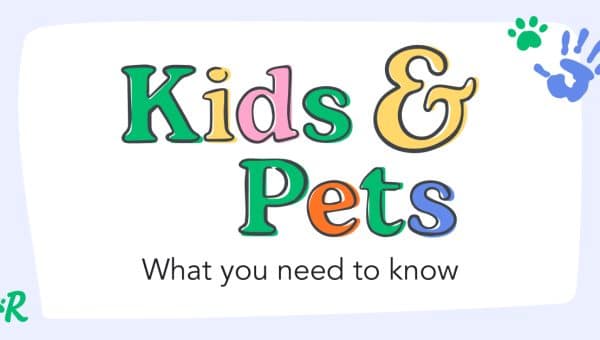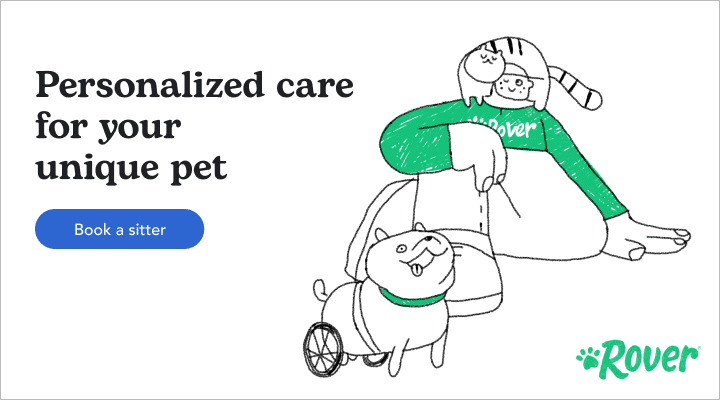Helping an aggressive dog isn’t always an easy problem to solve. And why they’re aggressive, in the first place, is often misunderstood. When your dog snaps or bites, that “aggressive” response is their attempt to defend their personal safety or resource. They are operating from a place of fear and haven’t had enough safe or good experiences to respond differently.
In many cases, a dog will stop responding aggressively if their perceived threat moves farther away. At other times, a dog may feel that they have no other option but to fight to resolve the threat.
As a trainer, I encounter worried dog owners asking, “what can I do about my dog’s aggression?” My first response is to reassure. There’s a long road between snapping and fighting, and you’re doing the right thing by trying to get ahead and change your dog’s journey towards healing.
If you suspect your dog is aggressive, reach out to a certified vet behavioralist or dog trainer. Depending on your dog’s level of aggression, you may need both vet behavioralist and fear-free certified trainer to create a plan that keeps everyone safe.
Keep reading to understand more about canine aggression and how to tailor your care and training methods to help your dog feel safe.
1. Research Why Your Dog Is Aggressive
Aggression and fear are two sides of the same coin. The root cause of your dog’s aggression isn’t that they’re naturally “bad” or “mean.” Most likely they’re fearful of or insecure with a particular environment or stimulus.
Research can help you understand what may have triggered or influenced your dog’s behavior today. Ask your dog’s previous pet parent, the rescue or shelter they came from, or your breeder about your dog’s experiences before they came to you. Dog aggression is commonly developed due to:
- Traumatic events or series of traumatic experiences with people or other dogs
- Lack of socialization with particular environments or types of individuals
- History of having important resources such as food or comfort removed or denied
Aggression can also be genetic or due to factors like hormones and chemical imbalances, and while there are medical solutions, trainers will recommend behavioral training to help your dog recover. If your dog develops aggression later in life or suddenly, talk to your vet. Sudden onset of aggression can be linked to illness, pain, or dementia, especially for senior dogs.
2. Avoid Punishment. It Doesn’t Work
It’s not uncommon to find undereducated dog guardians and trainers addressing dog aggression with positive punishment, negative reinforcement, or “alpha dog” mentality. Unfortunately, punishing a dog is likely to create more anxiety around frightening or unfamiliar situations. Punishment can teach a dog to hide their behaviors and communication abilities, resulting in “surprise” attacks or dog bites.
Remember: more fear = more aggression. It’s a vicious cycle.
More fear = more aggression.
Helping an aggressive dog to heal requires the same kind of compassion, understanding, and confidence-building. When researching certified dog trainers and behavioralists in your area, avoid trainers who promise quick fixes, leadership mentality, or aversive tools that cause pain.
3. Learn What Triggers Your Dog’s Aggression
When someone tells me they have an “aggressive” dog, my first questions are:
- What does your dog do when they are acting aggressive (i.e., growl, bite, lunge)?
- When do you see this aggression occur?
Most dogs aren’t uniformly aggressive towards everything. They have a particular trigger and, at times, require a specific context for that trigger. For example, some dogs are frightened of men but when you investigate the similarities, you may find that they are specifically frightened of men with hats or men who enter the home.
Common triggers for dog aggression include:
- Being near other dogs, on or off leash
- People getting too close (children and men are two common ones)
- Strangers who try to enter a dog’s territory (especially when the dog is chained or fenced)
- Perceived threats to important resources such as food, toys or sleeping places
When you know what triggers your dog, the first step is to create a management plan for how to avoid your dog’s triggers. This may look like not hosting parties or having guests over until you’ve worked with a trainer on how to create positive associations with strangers for your dog.
4. Dealing with Dog Aggression at Home
Aggression in the home may, in some ways, present a bigger challenge than addressing aggression in public. In public, you can avoid people and places, but at home, there’s less space and everyone needs to be in agreement with how to respond or approach your dog. Inconsistent rules and behaviors may increase anxiety or aggression in dogs because they don’t know what to expect.
Create rituals to comfort your dog
Never force your dog to participate in activities they don’t want to do. Even though you may wish your dog to be part of the festivities, your dog is likely to feel safer out of the way. To prepare your dog for occasions that may stress them out, set up specific “rituals” to comfort your dog.
For example:
- Before your guests arrive, prepare several delicious puzzle toys with high-value foods like chicken, hotdogs and cheese for your pup and put them in the freezer.
- When the doorbell rings, bring the smorgasbord and your dog with you into a back room where you’ve set up a comfortable bed and turned on some white noise.
- Close the door (or baby gate) and greet your guests in another area.
- Only free your dog from their quiet zone when all your guests have gone.
While this particular protocol falls more under the category of “management” than “training,” it does do a bit of double-duty. To your dog, the doorbell rings and suddenly four puzzle toys filled with the best stuff ever appear.
In other words, the doorbell predicts a super-special feast! With time, your dog may begin to think the doorbell isn’t such a bad thing after all, and you may be able to begin working with them on being in the same room when guests visit.
5. Dealing with Public Dog Aggression
If your dog is aggressive in public, it’s important to determine what their aggression is directed toward, and what “triggers” them to be aggressive. Once you’ve identified it, your first goal should be to prevent your dog from getting close enough to their trigger to elicit aggression in the first place.
Focus on creating space away from your dog’s triggers
Space is key to keeping a dog from feeling threatened or uncertain. Once you’ve figured out how much space is needed, you can begin to gradually help your dog to build positive associations with their trigger—ironically, by assuring that it predicts that wonderful things will happen. This is called desensitization-counterconditioning.
If getting the space necessary from the trigger isn’t possible (for example, if your dog is aggressive toward men and you live in a city), safely walking your dog and slowly improving their aggression will require you to transport your dog to quieter locations for walks or play.
6. Consider Muzzle Training
Consider desensitizing your dog to a muzzle. Though muzzles look scary and restrictive, they’re essential tools to providing an uncertain or unpredictable dog with additional freedom. Muzzles are the best reassurance that your dog will not hurt another person or dog, if they should suddenly lash out.
Even a dog who isn’t “that bad” can benefit from muzzle training for future scenarios like vet visits.
A dog properly desensitized to a muzzle shouldn’t have any trouble wearing it as long as you select the right style. Look for a Baskerville or basket-style muzzle. Avoid nylon muzzles that fit tightly around a dog’s nose. Nylon muzzles are meant for grooming, not outdoor activity, and because they prevent a dog from panting, can cause a dog to quickly overheat.
How to Find the Right Trainer and Resource
Helping a dog to overcome their aggression is a difficult task; changing a negative emotional response to a positive one always is. A Certified Professional Dog Trainer (CPDT-KA) trained in positive-reinforcement techniques can help you to establish realistic goals and reach them via a process of gradual desensitization and counterconditioning.
The key word here is “realistic.” A dog park will probably never be the right fit for a dog-aggressive dog, and leash-reactive dogs will probably always require some management on walks. Your dog may never live up to your expectations, and part of working with or loving an aggressive dog is accepting that fact.
You should also talk to your vet to see if there are any behavioral medications that can help your dog feel less stressed as you work on your solution plan.
Dog Aggression FAQs
How can I tell if I’m out of my element when it comes to rehabiliating my dog?
Your options for helping your dog depend on your bandwidth, resources, and ability to manage. Changing your dog’s feelings around a trigger can be a full-time job!
Before you start this journey, ask yourself:
- When interacting with my dog, who is at risk?
- Do I feel confident in my ability—including my ability to navigate the environment—to safely contain my dog when they’re around triggers?
- Am I willing to make lifestyle changes to support my dog? This can include social, professional, and familial changes that impact your emotional and/or physical wellbeing.
- Will my dog be happy with my management style and/or changes?
- If my management fails, what is the worst that’ll happen? Am I prepared to be responsible for the aftermath?
What if my dog has bitten someone or another dog?
Dog bites are a serious situation. Even a low-level bite can cause authorities to intervene. Aggression is an issue not to be taken lightly. If your dog has bitten someone, it’s important to get help immediately from a qualified positive-reinforcement trainer, never someone that uses punitive methods or techniques rooted in outdated and disproven “dominance” theory.
What should I do if my dog is aggressive towards children?
In a home in which a dog is aggressive toward children or other dogs, rehoming your dog might be your best option. Putting a dog in a situation in which they must exhibit daily control while under great stress is only setting them up for failure. With an aggressive dog, that often means biting.
It will be far easier to find your dog a new home before they have a bite history.





